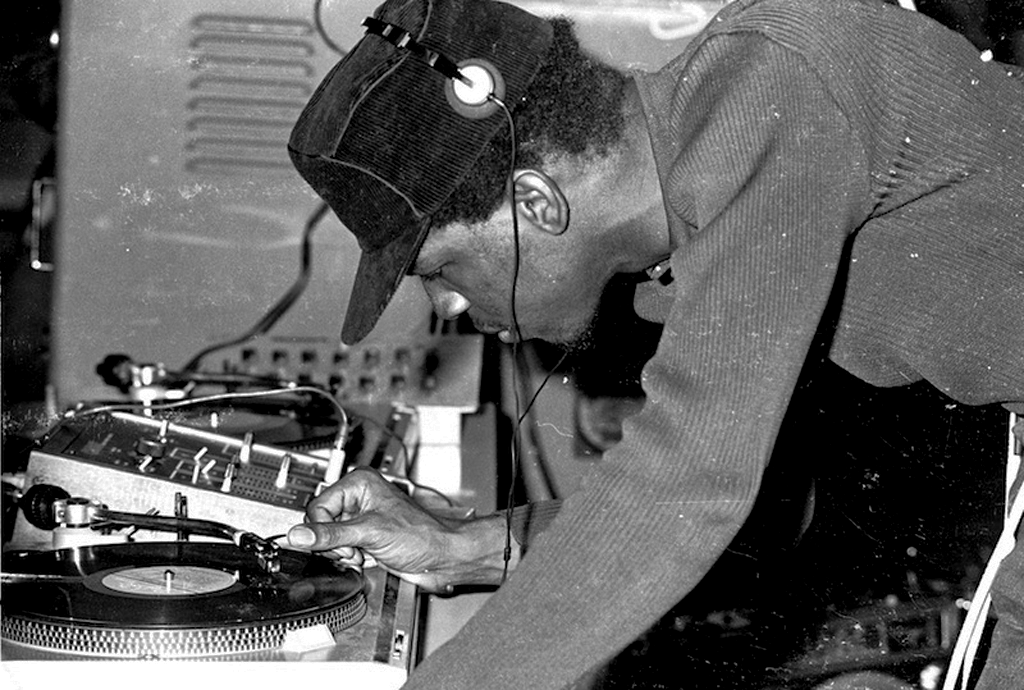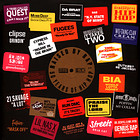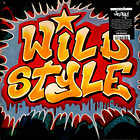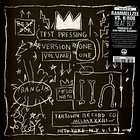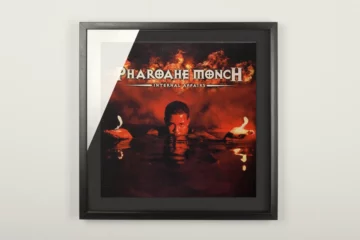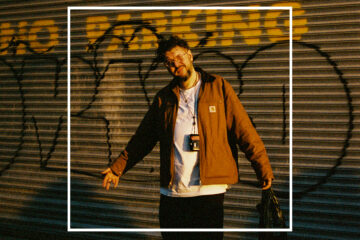Hip-hop begins with a story – a very good one. It goes like this: On 11 August 1973, a party is held in a common room in at tower block at 1520 Sedgwick Avenue in the Bronx, New York. It’s organised by Cindy Campbell to raise money for new clothes for the start of the school year. She asks her brother Clive to sort out the music. And so the first chapter begins.
It was to be a party that people would still be talking about 50 years later. It was to be the birth of hip hop.
Today, this day of August 11, 1973, this party has legendary status, reflected in numerous articles throughout the press. How legendary? One of the invitations to the party, handwritten on index cards, was auctioned at Christie’s last year – and sold for more than $27,000. An historical relic. If this party had never taken place, we would have no hip hop.
From break to break
»When people talk about Herc’s parties back then, they are talking about two things: about the intensity, the pure sound of the sound system – but also about the music that Herc was playing,« says Jeff Chang, American journalist and author of Can’t Stop Won’t Stop, published by National Public Radio. And people are still talking about them today.
DJ Kool Herc is the alias adopted by the then 18-year-old Clive Campbell. He focused on percussive breaks: those moments in the songs that served more as interludes and breaks in the funk and soul songs. So he bounces and switches from one break to another on his turntables, each spinning the same record. A completely new sound for New York, the USA, and the world. And people are freaking out.
That’s the story. But there’s more. Coming up in this chapter.
DJ Kool Herc becomes better and better known – and he becomes so engrossed in the sound during the ensuing performances that he no longer has time to make announcements during the tracks. Coke La Rock enters the scene, who is still regarded as one of the first MCs today. (Although it cannot actually be proven.) His job: to warm up the crowd.
A nice affair
Hip hop is born and shaped by the multicultural influences brought in by African Americans and immigrants from Latin America and the Caribbean, especially Jamaica (like DJ Kool Herc). Block parties become a thing, a place to go for many of the young people from disadvantaged backgrounds. The rumour persists that the sound and technology come from dub. Which doesn’t apply to DJ Kool Herc.
At 18, he was far too young to be interested in dub at the time. Rather, James Brown was his inspiration, as he has repeatedly pointed out in many interviews. The soul singer’s self-assured manner makes him a symbol of identification for many African Americans. And to the horror of the white American bourgeoisie. This is why his songs aren’t played on the radio. Which makes Herc’s parties even more attractive for a younger crowd.
»Kool DJ Herc looked like a superhero on that podium playing this music that wasn’t on the radio. I liked what he did and what he played – and I wanted to do exactly the same thing.«
Grandmaster Flash
Yet, according to various witness accounts, the first parties were nice affairs: mostly high school students who were too young or too clean or lived too far west to fall into the clutches of the gangs, as Jeff Chang put it in his book. From time to time a parent would check in to see if everything was ok. With clubs and discos closing, young people in the West Bronx just needed a place to party.
Indoor spaces like the one at 1520 Sedgwick Avenue quickly become too small. So a new venue is needed for DJ Kool Herc. He finds it in Cedar Park. And the next chapter begins. This time with new performers.
The trinity of early hip hop
The power comes from a tool shed where some kid climbed into to plug in Herc’s McIntosh amp. The volume is turned up again. And this attracts more people. Among them: Joseph Saddler, who calls himself Flash. »Herc looked like a superhero on that podium playing this music that wasn’t on the radio. I liked what he did and what he played – and I wanted to do exactly the same thing«, Saddler recalls. And soon he does exactly that. In the following years he developed elementary DJing techniques and as Grandmaster Flash and the Furious Five released one of the most important songs in hip hop with »The Message«.
Afrika Bambaataa, the last member of the trinity of early hip hop alongside Grandmaster Flash and DJ Kool Herc, is yet to make an appearance in this chapter: From a very young age, he carries around his idea of a Zulu Nation, a collective of rappers, artists, dancers and DJs. As a youth he is a member of a street gang, but after the death of a friend he questions their meaning. When he founds the Zulu Nation in November 1973, several members of the gang follow him. From that point on, the Zulu Nation organises concerts and parties for young people. Afrika Bambaataa becomes their spiritual father.
He now performs with his own sound system at block parties – also as a DJ. He is best known for his huge record collection and the many influences that shape his sound. (Years later, Bambaataa samples a track by Dusseldorf band Kraftwerk for his hit »Planet Rock«.)
The four pillars of hip hop
To this day, sound and rap are at the forefront when people talk about hip hop – but hip hop goes beyond that. It has four pillars. Check for rap and DJing. More to come.
Herc’s sound – logically – makes people dance. In a new way. The dancers are called »breakers« or »B-boys and B-girls«. They can move perfectly to the various breaks in the rhythmic sound, adding acrobatic moves. In the coming years, the idea of battles emerges, where the »breakers« from different groups stand in a circle and compete against each other in the middle.
The next chapter, the last pillar of hip hop does not emerge in New York, but rather has to arrive there first. It comes with a real bang.
Graffiti is becoming increasingly popular in Philadelphia. Here the story goes like this: In the 1960s, teenager Darryl McCray, aka Cornbread, sprays his love for a girl on walls across the city. He likes the technique so much he continues, but by simply spraying his tag.
Vandalism and vernissages
However, two years before Kool Herc DJ’s at 1520 Sedgwick Avenue, a newspaper report declares Darryl McCray for dead. Which spurred the then 18-year-old (and very much alive) McCray to prove otherwise, as the nearly 50-year-old subsequently tells Time ONLINE. He climbs into the zoo’s elephant enclosure and sprays the message »Cornbread lives!« on one of the elephants. Graffiti has arrived now as a form of expression and protest. Not just in Philadelphia. However, it still doesn’t have a name.
In 1974, US writer Norman Mailer publishes his essay »The Faith of Graffiti« in Esquire magazine, and is the first to use the term »graffiti« in a written piece. In it, he admires this new form of art, which local politicians and many citizens see as a blight on New York. But the city’s art galleries have long since started buying graffiti for their exhibitions. The conflicting relationship between street art and the commercialisation of art is already emerging. But that’s another story.
After DJ Kool Herc’s first parties, the move to the parks, the reactions and the bonding, it takes years for hip hop to make it onto TV or even the radio. The first releases in the genre are “Rapper’s Delight” (1979) by Sugarhill Gang and “King Tim III” (1979) by Fatback Band. While the sound that characterises these early days of hip hop is compelling and captivating, some of the rhymes are quite simplistic. The influence of disco and funk is particularly evident in the earliest records of the genre, and much more so than today. But by the time these first records are released, hip hop is caught between youth culture, a form of protest and a mass phenomenon.
The world is hers
At the first parties, no one thinks about these possibilities, about all that is to come. Hardly any other sound or other culture is conquering the globe as fast as hip hop. One of the reasons for this is that it is relatively easy for aspiring artists to get started with this sound. (You don’t even have to be able to play the guitar!)
DJ Kool Herc, Grandmaster Flash and Afrika Bambaataa are still regarded as the pioneers and inventors of hip hop – at least when it comes to the sound, even if it has long since evolved.
By the time the first records are released, hip hop is caught between youth culture, a form of protest and a mass phenomenon.
…
Grandmaster Flash and DJ Kool Herc gradually withdraw from the public eye. Other artists later reap the lucrative rewards. After being treated for kidney stones in the early 2010s, DJ Kool Herc had to raise money because he doesn’t have any health insurance.
Allegations of abuse have been made against Afrika Bambaataa in recent years, with several alleged victims coming forward. As a result, many members of the Zulu Nation have left and started their own organisation. Bambaataa himself remains silent on the specific allegations, partly because of the charges made, and maintains his innocence.
But as the chapter on the founding fathers fades, so many chapters follow that grew out of those first parties. Chapters on rappers like Kurtis Blow and KRS-One, or artists like Lost Poets and Public Enemy, on the political expressiveness of hip hop.
The story continues. Even if we are already in a completely different chapter. Those who look back will be rewarded. With one of the most exciting epochs in recent history from which so much has emerged for the present.

